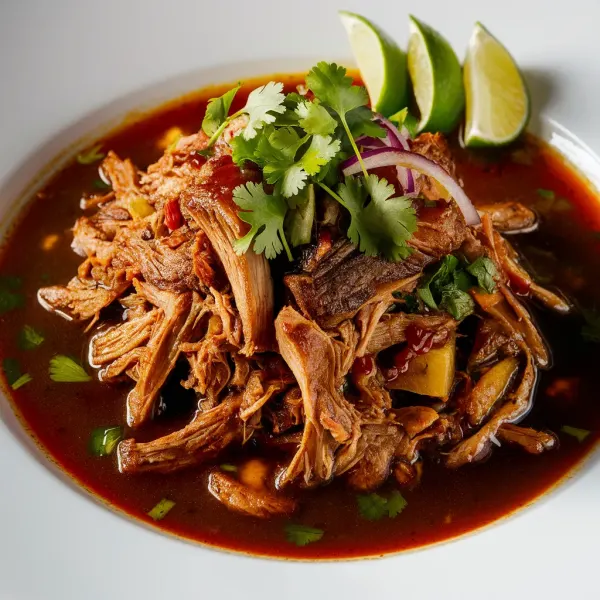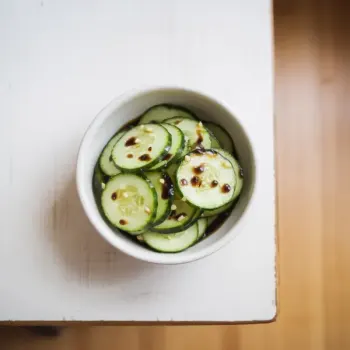
 870 minutes
870 minutesA flavorful and tender pork shoulder braised with smoky ancho chiles and aromatic vegetables.


tablespoons
teaspoons
Oregano, chopped
tablespoons
Ground Ancho Chile
teaspoons
Bone-in Pork Shoulder Roast, trimmed of excess fat
0 lb
Onions, peeled and coarsely chopped
each
Carrot, peeled and coarsely chopped
each
Dried Ancho Chiles, split and seeds removed
each
Dried Chipotle Chile, split and seeds removed
each
Garlic, peeled and coarsely chopped
head
Black Peppercorns
to taste
to taste
cups
1. Prepare the Dry Rub
Mix the salt, fresh-ground black pepper, chopped marjoram or oregano, and ground ancho chile together. Generously rub this spice blend all over the pork shoulder roast. For the best results, do this the day before you plan to cook and let the seasoned meat rest in the refrigerator overnight.
2. Preheat the Oven and Prepare Vegetables
Preheat your oven to 375°F. Arrange the onions, carrot, dried ancho chiles, dried chipotle chile, chopped garlic, black peppercorns, and marjoram or oregano sprigs in a heavy baking dish or roasting pan.
3. Add Pork Shoulder and Broth
Place the seasoned pork shoulder roast on top of this bed of vegetables and chiles. Pour the chicken broth into the dish, making sure the liquid reaches about one quarter of the way up the roast.
4. Cook the Pork Shoulder
Place the dish in the preheated oven and cook for 1 hour and 15 minutes. Halfway through, turn the roast over to ensure even cooking, and add more broth if necessary to maintain the liquid level. Continue to cook and turn the roast every 30 minutes until it's tender and thoroughly cooked, which should take approximately 2 hours and 15 minutes in total.
5. Rest the Meat and Strain the Sauce
Once the meat is cooked, remove it from the pan and let it rest. Strain the cooking liquid to create a smooth, flavorful sauce. If you like, you can pass the vegetables through a food mill to incorporate them into the sauce.
6. Serve the Pork Shoulder
Remove the bones from the roast, slice the meat, and arrange it on a platter. Serve the sauce either poured over the meat or on the side in a pitcher or sauceboat.
Braise the pork at a low temperature for several hours to allow connective tissues to break down, ensuring the meat is fork-tender.
Opt for high-quality, well-marbled pork shoulder (also known as pork butt). The marbling will render down during the cooking process, resulting in tender, flavorful meat.
Achieve a rich, golden-brown crust by searing the pork shoulder on all sides. This Maillard reaction contributes to the savory foundation of your dish.
Allow the cooked pork to rest before shredding it to ensure the juices redistribute, keeping the meat moist. Optionally, broil the shredded pork to add crispy edges.
Sauté onions, garlic, and additional aromatics in the same pot used to brown the pork to incorporate the fond into the braise.




Comments (0)